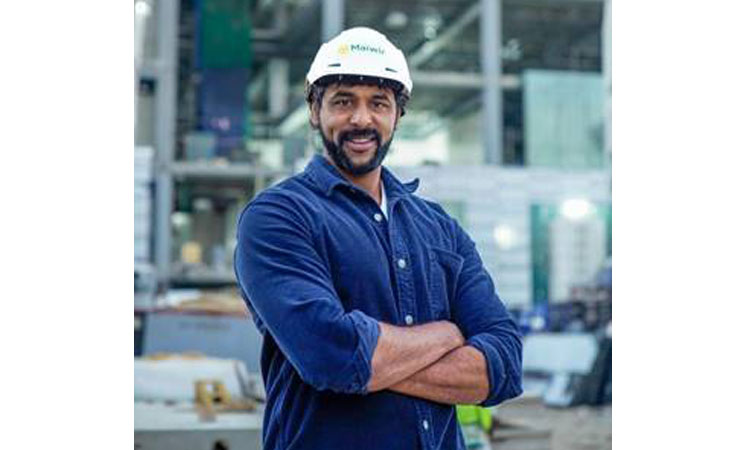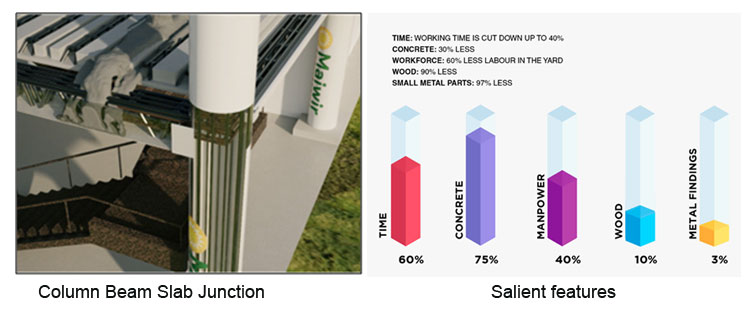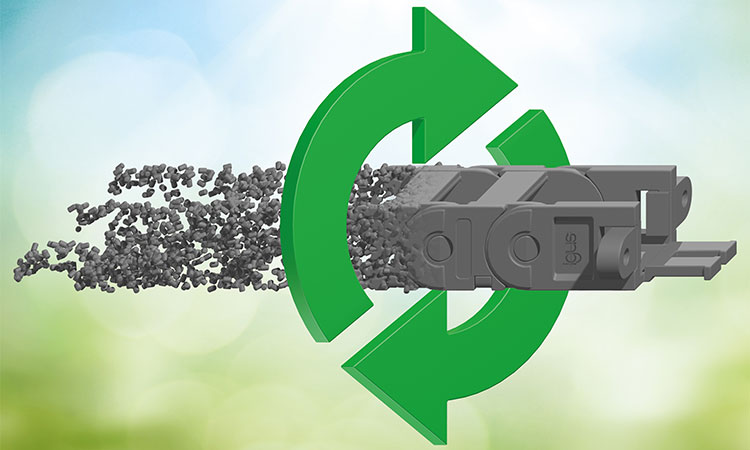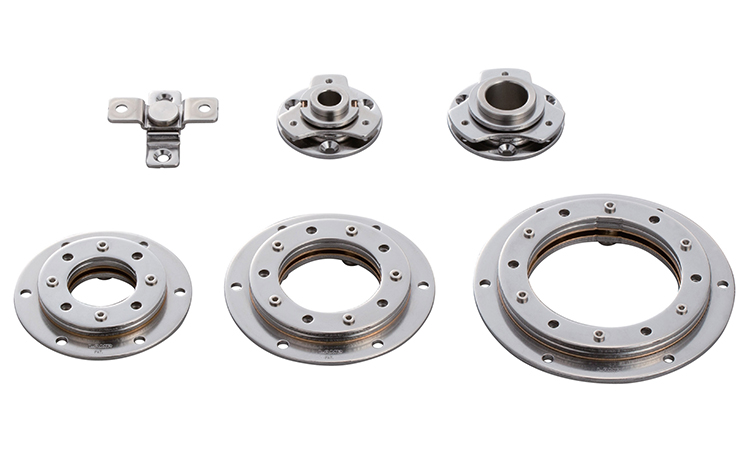80% lower CO2 footprint: igus switches to recycled…

Trends in global urbanization | ENGINEERING REVIEW |Manufacturing | Industrial Sector Magazine & Portal
Global urbanization trends pose the challenge of an increasing pressure on urban housing and infrastructure. According to the United Nations (UN), urbanization will add another 2.5 billion people to urban populations by 2050. It is predicted that global population will rise to 9 – 11 billion people.
Thus urbanization and population are two parallel trends that suggest the need to optimize already limited resources to develop sustainable solutions for the safety and comfort of the world’s future urban population.
Experts are of the opinion that the continuous evolution of tall buildings fits the overall urban sustainability agenda as an inevitable housing solution. Today, urban centres around the globe are witnessing a rapid re-configuration of the urban skyline. The diversity of such global trend is witnessed in the level of development occurring in places like Shanghai, Shenzhen, Hong Kong, Dubai, Riyadh, Mumbai, and London, to name only a few.
Most of the development is occurring in booming economies in Asia & GCC. According to the Council on Tall Buildings and Urban Habitat, of the 143 buildings over 200 meters high completed in 2018, 88 were in China. Similarly, Hong Kong and Singapore are distinguished by their high-rise public housing developments. The Council on Tall Buildings and Urban Habitat (rewards the best skyscrapers in the world, including the one in Milan with the composite system) pushes for the mixed steel concrete structures.
Some facts & figures
- Asia takes second place after North America for tallest building by region.
- Office space is tallest building by function, followed by mixed use.
- Composite falls in third place after all steel & concrete respectively
Besides population growth and urbanization, these countries are also characterized by limited land space, factors which have encouraged these cities to celebrate vertical development. Thus, over a period of 40 – 50 years, tall buildings will become the dominant building form and lifestyle of the population.
Opportunities In GCC
The construction industry in the Gulf Co-operation Council (GCC) includes Saudi Arabia, Kuwait, UAE, Qatar, Bahrain, and Oman. Key players are shifting focus from small and medium projects to large projects which involve infrastructure, complex civil work, and electromechanical systems.The major players include companies such as:
- Saudi Binladin Group (Saudi Arabia) – Kuala Lumpur Airport – Malaysia, Four Seasons Hotel- Jordan…etc
- China State Construction Engineering Corporation (China) –The symbolic Tower in Kuala Lumpur – Malaysia, Viceroy Hotel Palm of Isle-Dubai, etc
- El Seif Engineering Contracting Company (Saudi Arabia) – Kingdom Tower- Riyadh, Jewels Twin Towers- Dubai, etc
- Arabian Construction Company (Saudi Arabia)- Etihad Towers-Abu Dhabi, The Address Sky View- Dubai, etc
- Arabtec Construction (Saudi Arabia)- Al Jarah Project- Saudi Arabia, etc
- Emaar (UAE)- Burj Khalifa- Dubai, Marina Shores -Dubai Marina, etc
- Consolidated Contractors Company (Greece) – Sidra Medical & Research Centre -QATAR, Presidential project –UAE, etc
- Al Arrab Contracting Company (Saudi Arabia) – King Faisal University Hospital – Saubi Arabia, Takatuf Jeddah Real Estate Development & Investment LLC…etc
- Al Jaber LEGT Engineering & Contracting LLC (UAE)- Waterfront Veneto project – Dubai, Al Raha Beach development- Abu Dhabi…etc
- TAV Construction (Saudi Arabia)-DAMAC Tower’s by Paramount- Dubai, IL PRIMO – Dubai…etc
Favourable factors for infrastructure growth
- Macroeconomics-paradigm shift from oil base economy to tourism & urbanisation
- Rising tourism activities
- positive demographics
- mega-events
- New mortgage law in Saudi Arabia, and
- High bank liquidity
Challenges
While it is generally acknowledged that tall buildings are a viable solution to urbanization challenges of the 21st century, these buildings also suffer from underperformance issues such as delays. These are defined as situations where a project’s completion time is postponed due to causes that may be related to the client, consultant, and contractor, etc. Delays can also be defined as situations where an event occurs at a time later than expected, or to be performed later than planned or not to take timely actions; or occurring beyond the agreed date specified in the contract. Delays in construction projects have potentially negative effects to all stakeholders including disputes or legal battles in court, cost and time overruns, loss of productivity and revenue, and contract termination. The ambitious and risky nature of tall building projects has led to a trail of abandoned projects across the globe
Major reasons for cost overrun & delay in project completion timelines
- Causes due to contractual relations – approvals, decision-making & excessive bureaucracy
- Inaccurate Project Estimates – Material approvals, delayed logistics, shortages.
- Causes related to Manpower & Machinery– availability of skilled & unskilled workforce, poor productivity & disputes/strikes.
- Serious Project Design Errors& change orders
- Poor project & Site Management
- Causes related to financing & cashflows
Mitigation Using Hybrid Composite-Steel Technology
High-rise buildings play an increasingly important role in contemporary architecture. Most high-rises have frames made of steel or steel and concrete. Their frames are constructed of columns and beams. Cross-bracing or shear walls may be used to provide a structural frame with greater lateral rigidity in order to withstand wind loads.
A typical hot-rolled or steel built up sections in a high-rise building is always expensive than other conventional systems. Advanced technologies in construction sector are not that popular as the standard construction technologies. One basic reason behind this is the mindset of the people. However, with the changing mindset of the people and growing awareness towards the benefits of using new and efficient technologies, it is expected that over time these new technologies will gain. wider acceptance, one such technology is hybrid composite steel structures.
Adoption of Hybrid Composite steel structures is a more affordable and sustainable solution to overcome these challenges. Hybrid steel composite technology is much more flexible in terms of design, thereby optimizing the material usage, making the project less labour intensive and more mechanised, further improving the safe working environment and reducing the construction timelines.
Integrating this system with BIM (Building Information Modelling) services, one can closely associate with all the stakeholders during the engineering phase itself to integrate various systems associated with the building like MEP, façade and other architectural aspects to provide a holistic approach to make it a robust solution and mitigate all the risks involved at project planning phase.
About the technology
Hybrid Composite-steel technology constitutes primary structural components i.e. columns encased in steel with cages (CFT system), truss beams & lattice girder slabs with cast in-situ concrete. Each component is designed & fabricated by combining high characteristic properties of steel (under tension) and concrete (under compression).









